
Sign up
Log in
George

This is a modal window.
Beginning of dialog window. Escape will cancel and close the window.
End of dialog window.
China-Space Station/Plant Cultivation
In Space - Recent (China Manned Space Agency - No access Chinese mainland)
1. Various of Chinese astronaut using space-based vegetable cultivation apparatus
Beijing, China - Recent (CCTV - No access Chinese mainland)
2. SOUNDBITE (Chinese) Yang Renze, researcher, China Astronaut Research and Training Center (ending with shot 3):
"We have a replica [of the cultivation apparatus] on the ground with the same frequency and parameters as in space. It is to verify the disparity between vegetables grown in space and on ground. So far we observe that the growth statuses are basically the same."
3. Various of researchers on ground using space-based cultivation apparatus to grow vegetables
In Space - Recent (China Manned Space Agency - No access Chinese mainland)
4. Various of Chinese astronaut showing vegetables grown in space
5. Various of Chinese astronaut assembling space-based vegetable cultivation apparatus
Beijing, China - Recent (CCTV - No access Chinese mainland)
6. SOUNDBITE (Chinese) Yang Renze, researcher, China Astronaut Research and Training Center (ending with shot 7):
"This vegetable cultivation apparatus is a key part of the whole Environmental Control and Life Support System, and it is used in space to verify the relevant technologies. In the future, we will focus on rapid and large-scale cultivation."
7. Various of researchers on ground growing vegetables with space-based vegetable cultivation apparatus
In Space - Recent (China Manned Space Agency - No access Chinese mainland)
8. Various of Chinese astronaut assembling space-based vegetable cultivation apparatus
Beijing, China - Recent (CCTV - No access Chinese mainland)
9. SOUNDBITE (Chinese) Yang Renze, researcher, China Astronaut Research and Training Center (ending with shot 10):
"The system can be applied to the field of deep-space exploration, including our manned lunar and Mars landing missions. As a key part of the ECLSS, the plants grown from the cultivation apparatus can absorb carbon dioxide in the air to generate oxygen with the photosynthesis, and then regenerate and purify water with transpiration."
10. Machine testing humidity, nutrition of vegetables
11. Various of researchers on ground using space-based cultivation apparatus to grow vegetables
The vegetable cultivation experiment carried out by China's in-orbit Shenzhou-16 crew has yielded good harvest, as they verified the reliability of plants-growing technology in space, which laid the foundations for future deep-space exploration.
Chinese astronauts are deeply absorbed in the space-based vegetable farming technology. During previous Shenzhou-11 mission in 2016 and Shenzhou-14 mission in 2022, the astronauts managed to grow lettuce, wheat, rice and arabidopsis in the Tiangong space station.
So far, China's space station has two vegetable cultivation apparatuses. The first one started operation in late-June and has reaped four batches of lettuce. The second one was put into operation in mid-August for growing cherry tomatoes and green onions.
"We have a replica [of the cultivation apparatus] on the ground with the same frequency and parameters as in space. It is to verify the disparity between vegetables grown in space and on ground. So far we observe that the growth statuses are basically the same," said Yang Renze, a researcher from China Astronaut Research and Training Center.
Apart from providing fresh vegetables for astronauts in space, the planting experiment mainly serves to verify technologies of the new-generation Environmental Control and Life Support System (ECLSS) for deep-space exploration.
As a key technology for China's manned space missions, the ECLSS creates basic living conditions and builds a livable working environment for the astronauts, thus ensuring their health and safety.
"This vegetable cultivation apparatus is a key part of the whole Environmental Control and Life Support System, and it is used in space to verify the relevant technologies. In the future, we will focus on rapid and large-scale cultivation," said Yang.
So far, Chinese astronauts have completed the verification experiment of plant cultivation under weightless conditions, which has laid the foundation for further development of the ECLSS.
"The system can be applied to the field of deep-space exploration, including our manned lunar and Mars landing missions. As a key part of the ECLSS, the plants grown from the cultivation apparatus can absorb carbon dioxide in the air to generate oxygen with the photosynthesis, and then regenerate and purify water with transpiration," said Yang.
China-Space Station/Plant Cultivation
Dateline : Recent
Location : China
Duration : 1'43
In Space - Recent (China Manned Space Agency - No access Chinese mainland)
1. Various of Chinese astronaut using space-based vegetable cultivation apparatus
Beijing, China - Recent (CCTV - No access Chinese mainland)
2. SOUNDBITE (Chinese) Yang Renze, researcher, China Astronaut Research and Training Center (ending with shot 3):
"We have a replica [of the cultivation apparatus] on the ground with the same frequency and parameters as in space. It is to verify the disparity between vegetables grown in space and on ground. So far we observe that the growth statuses are basically the same."
3. Various of researchers on ground using space-based cultivation apparatus to grow vegetables
In Space - Recent (China Manned Space Agency - No access Chinese mainland)
4. Various of Chinese astronaut showing vegetables grown in space
5. Various of Chinese astronaut assembling space-based vegetable cultivation apparatus
Beijing, China - Recent (CCTV - No access Chinese mainland)
6. SOUNDBITE (Chinese) Yang Renze, researcher, China Astronaut Research and Training Center (ending with shot 7):
"This vegetable cultivation apparatus is a key part of the whole Environmental Control and Life Support System, and it is used in space to verify the relevant technologies. In the future, we will focus on rapid and large-scale cultivation."
7. Various of researchers on ground growing vegetables with space-based vegetable cultivation apparatus
In Space - Recent (China Manned Space Agency - No access Chinese mainland)
8. Various of Chinese astronaut assembling space-based vegetable cultivation apparatus
Beijing, China - Recent (CCTV - No access Chinese mainland)
9. SOUNDBITE (Chinese) Yang Renze, researcher, China Astronaut Research and Training Center (ending with shot 10):
"The system can be applied to the field of deep-space exploration, including our manned lunar and Mars landing missions. As a key part of the ECLSS, the plants grown from the cultivation apparatus can absorb carbon dioxide in the air to generate oxygen with the photosynthesis, and then regenerate and purify water with transpiration."
10. Machine testing humidity, nutrition of vegetables
11. Various of researchers on ground using space-based cultivation apparatus to grow vegetables
The vegetable cultivation experiment carried out by China's in-orbit Shenzhou-16 crew has yielded good harvest, as they verified the reliability of plants-growing technology in space, which laid the foundations for future deep-space exploration.
Chinese astronauts are deeply absorbed in the space-based vegetable farming technology. During previous Shenzhou-11 mission in 2016 and Shenzhou-14 mission in 2022, the astronauts managed to grow lettuce, wheat, rice and arabidopsis in the Tiangong space station.
So far, China's space station has two vegetable cultivation apparatuses. The first one started operation in late-June and has reaped four batches of lettuce. The second one was put into operation in mid-August for growing cherry tomatoes and green onions.
"We have a replica [of the cultivation apparatus] on the ground with the same frequency and parameters as in space. It is to verify the disparity between vegetables grown in space and on ground. So far we observe that the growth statuses are basically the same," said Yang Renze, a researcher from China Astronaut Research and Training Center.
Apart from providing fresh vegetables for astronauts in space, the planting experiment mainly serves to verify technologies of the new-generation Environmental Control and Life Support System (ECLSS) for deep-space exploration.
As a key technology for China's manned space missions, the ECLSS creates basic living conditions and builds a livable working environment for the astronauts, thus ensuring their health and safety.
"This vegetable cultivation apparatus is a key part of the whole Environmental Control and Life Support System, and it is used in space to verify the relevant technologies. In the future, we will focus on rapid and large-scale cultivation," said Yang.
So far, Chinese astronauts have completed the verification experiment of plant cultivation under weightless conditions, which has laid the foundation for further development of the ECLSS.
"The system can be applied to the field of deep-space exploration, including our manned lunar and Mars landing missions. As a key part of the ECLSS, the plants grown from the cultivation apparatus can absorb carbon dioxide in the air to generate oxygen with the photosynthesis, and then regenerate and purify water with transpiration," said Yang.
ID : 8347841
Published : 2023-10-22 21:49
Last Modified : 2023-10-22 21:53:22
Source : China Central Television (CCTV)
Restrictions : No access Chinese mainland
More
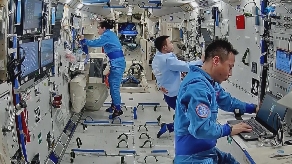
In Space-Shenzhou-19/Experiments
ID:8419146

В космосе-"Шэньчжоу-19"/Эксперименты
ID:8419146

En Espacio-Shenzhou-19/Experimentos
ID:8419146

Dans l'espace-Shenzhou-19/Expériences
ID:8419146

宇宙-「神舟19号」/最新実験映像
ID:8419146
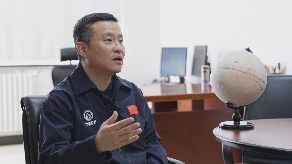
China-Mars Exploration/Planned Mission
ID:8418717

中国-火星探査
ID:8418717
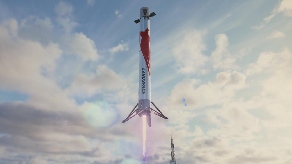
China-Gov't Work Report/Commercial Space
ID:8418738
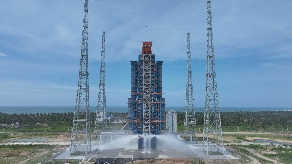
China-Hainan Commercial Launch Site/Cooling System
ID:8419595
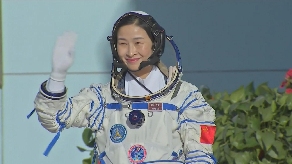
China-NPC Deputy/Astronaut
ID:8419302
CCTV News Content Co., Ltd. All rights reserved 2022 | Terms & Conditions | 互联网新闻信息服务许可证 10120190015 | 京ICP备16065310号 | 本网站由环球国际视频通讯社有限公司主办
CCTV News Content CO., Ltd.All rights reserved 2022 | Terms & Conditions | 京ICP备16065310号 | 本网站由环球国际视频通讯社有限公司主办
You can download the app for more highlights.
Download
